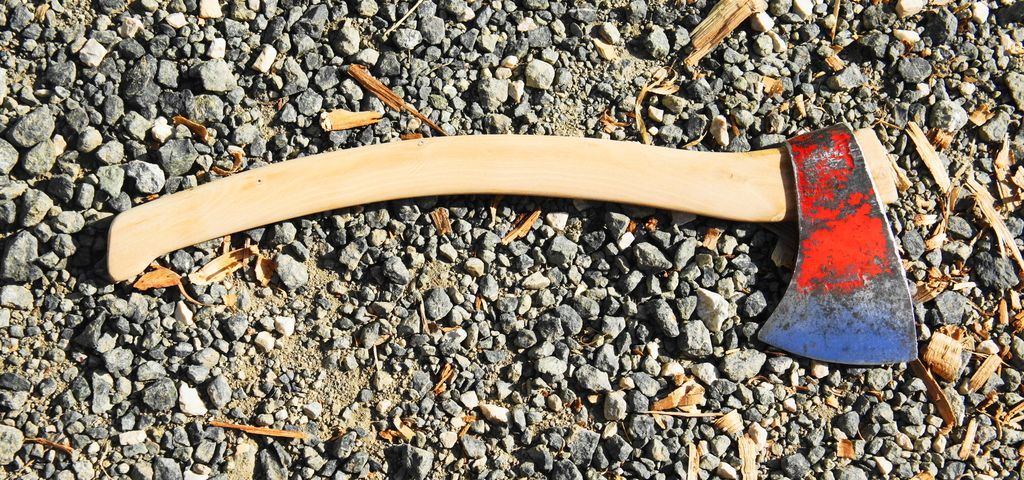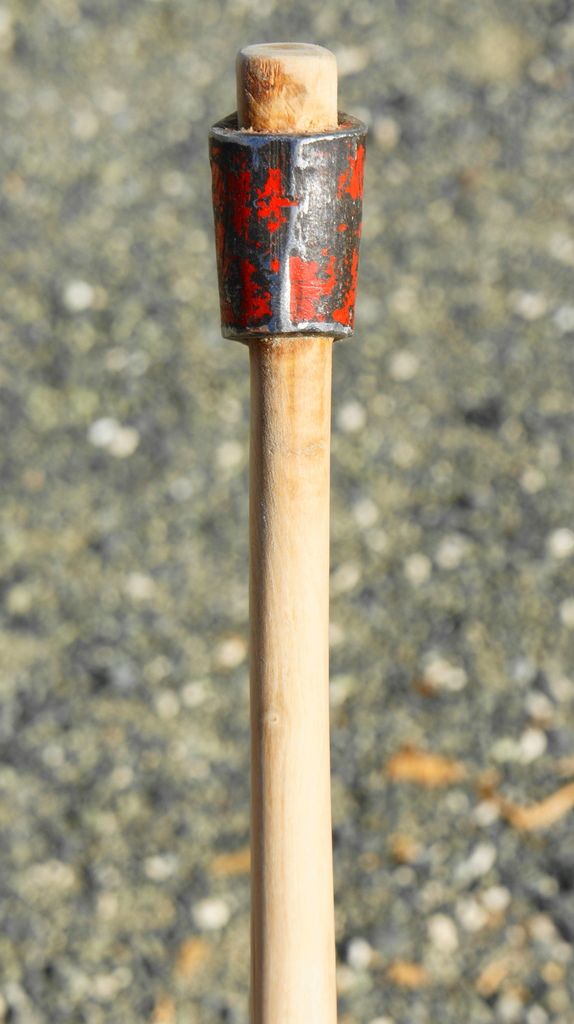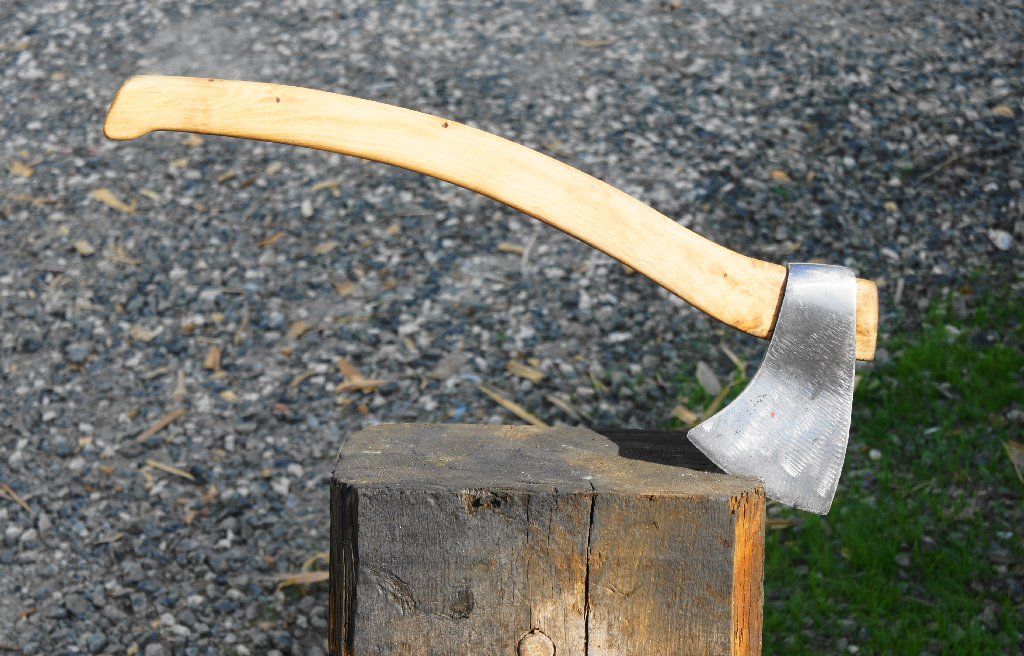They share pretty wide bits, but the Russian axes have normal eyes with wedged handles. Funnily I turned up this image using "Russian butcher's axe" as a search-

Note how this has the small protrusion under the handle as well, can anyone tell me what it's for?
I know it's no good for overstrike on either axe as the edge comes back further than it.
Also the there is a gap between it & the handle, it'clearly not meant to fit against the bottom of the handle.
Only thing I can think of is something to hang it on a nail or peg by, anyone know?
The funny thing about this search find is that it is a Billnäs axe....(that's what the cyrillic script says:"Factory Billnas"
Fantastic job handling that Spanish axe...looks like it would be fun,and pleasant,to use...right on!





